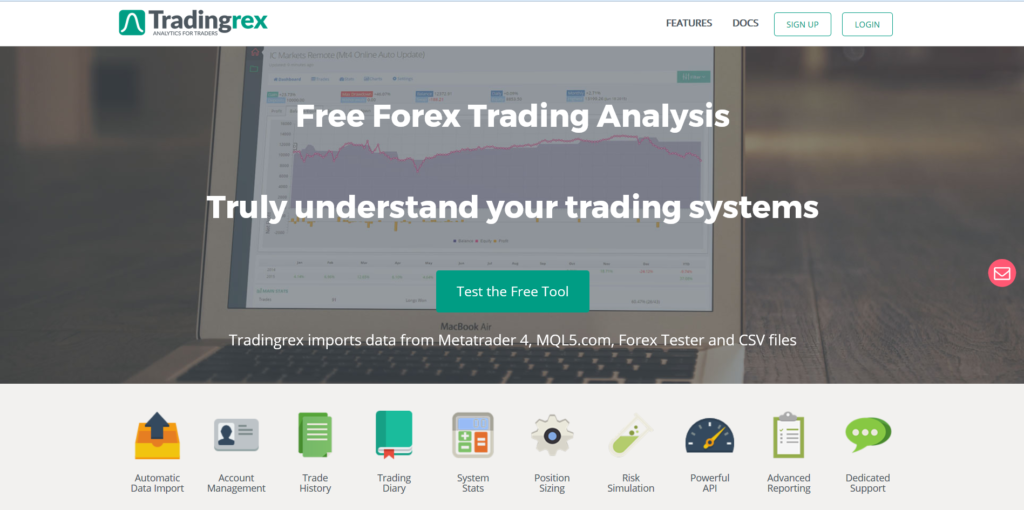 Just about all forex brokers will provide their clients with a record of every trade, margin amount, profit or loss and the amount of funds available for additional trades. Nevertheless, keeping a separate forex trading journal can significantly improve a trader’s chances for success.
Just about all forex brokers will provide their clients with a record of every trade, margin amount, profit or loss and the amount of funds available for additional trades. Nevertheless, keeping a separate forex trading journal can significantly improve a trader’s chances for success.
Surprisingly, many traders either do not keep a separate trading journal, or they fail to use it correctly and consistently. These traders can miss the important insights and major benefits that keeping a trading journal can bring to their trading business.
One of the major benefits of keeping a trading journal consists of being able to determine your trading performance, review your analytical process, and keep track of your psychological reactions to profits and losses. Keeping a journal like this also allows you to analyze the success of each trade, which currency pairs made the most money, the trading timeframe, and the time period for which the trade was held.
What Is a Trade Journal?
Basically, a trade journal is a very popular trading tool that consists of a written record of all trading activities kept by the trader. The trading journal generally includes information that would not normally be included in the account statement, such as the trader’s mindset, how the market conditions appeared to the trader when they pulled the trigger on a trade, as well as the general feelings the trader had when the trade was made.
The main focus of a trading journal is to keep accurate records of the trader’s trading activity, their adherence to a trading plan, and the trader’s own mental and psychological reactions to their trading activity. Nevertheless, an assessment of a trader’s journal amounts to very little if the trader has failed to keep accurate records.
Furthermore, examples of trade journals show how unique each trader’s records can be and what different traders observe about themselves when trading. Keeping a diary of trades can give a trader an insight that can only be learned from analyzing their own trades and noting their personal reactions after each trade is made.
Just by virtue of keeping a journal of their trading activities, a trader should gain a broader level of awareness about their trading behavior. This can prevent them from acting impulsively in future to the detriment of their account balance. In addition, obvious problems such as overtrading or riding a profit into a loss become even more obvious when the trader is keeping a journal, which in turn make them easier for them to observe and correct.
Keeping a trading journal seems most effective when used in combination with the steadfast discipline needed for a trader to adhere to their preferred trading plan. By keeping a journal, the trader is regularly reminded of any lapses of discipline. As a result, they generally become better at keeping to their trading plan, and they also have access to a detailed record of each time when they diverged from disciplined behavior and what the consequences of doing that were.
Who Uses a Forex Journal?
A journal is kept by many successful traders that want to be objective about their trading. The more serious a person is about their trading, the more likely they will treat trading as a business and keep an accurate journal. All successful businesses keep meticulous records of their activity, trading is no different.
While most inexperienced traders underestimate the importance of keeping a journal, seasoned traders know the value of keeping an accurate record of not only trading activity, but the mindset and emotions involved when taking a profit or conversely, when taking a loss.
While all traders should keep a journal, to certain traders, keeping a journal might be a limiting factor, such as for very short-term traders. Day traders and scalpers might need to react and get in and out of trades in a very short time interval. This would make journaling each trade cumbersome and could potentially lose the trader money by missing a trade.
Nevertheless, for many other traders, keeping a journal gives them insights that they would not gain if they did not keep a journal. Not many people have a memory for their biggest mistakes or even for that matter, their biggest wins, which is the reason that keeping a journal is so important for a trader.
Key Elements of Forex Trading Journals
 Trading journals can come in as many variations as there are traders, but generally they will all contain certain information or elements that describe the characteristics of the trade.
Trading journals can come in as many variations as there are traders, but generally they will all contain certain information or elements that describe the characteristics of the trade.
They might also have an entry that lists the prevailing market conditions when the trader decided to make a particular transaction in the forex market.
The basic elements that most journals keep track of are:
- Time of the trade – this information lets the trader know in what session the trade was initiated. The information could also contain the market conditions and the reason the trade was made.
- Exchange rate of the trade – this shows at what level the trader initiated the trade. In addition to the exchange rate, this information could also include the target rate for exiting the trade, the amount of risk the trader is willing to take and the level for the stop order.
- Size of the trade – the trade size in relation to the rest of the account. This information is extremely important for money management.
- Results of the trade – Whether the results for the trade were achieved, and to what degree.
Several elements can make the journal much more effective. These include comments upon entering the trade and when liquidating the position. The level that you have decided to exit the trade and at which level your stop order has been placed, as well as the reason for picking that level.
Forex Trade Journal Documentation
While some traders simply document the basic trading information when keeping a trade journal, other traders will write down everything that went through their head for each trade.
Each trader writes their journal in their own unique manner, but the trading journal is generally used as a tool to ensure that the trader is adhering to their trading plan and to provide helpful feedback to the trader about what worked for them and what did not.
In most cases, the way that a trader gets the most out of keeping a trade journal is by favoring self-analysis over numerical analysis. Focusing on personal considerations involved in trading more clearly illustrates when and why mistakes were made, and it can give indications on how to avoid making the same error on future trades.
Spreadsheets and screen captures of MT4 charts used for analysis are commonly utilized for trading journals. Nevertheless, some traders prefer to journal manually by writing everything down in a lined notebook. While this may seem somewhat backwards in today’s electronic age, some traders find that this way of journaling suits them best.
Analyzing Forex Journal Results
 Taking the time to analyze your trading journal will probably be one of the very best ways to attain improved success as a trader. Also, when you look at your trading actions with the benefit of hindsight, you will generally receive a much clearer and better picture of those things you can improve about your trading behavior.
Taking the time to analyze your trading journal will probably be one of the very best ways to attain improved success as a trader. Also, when you look at your trading actions with the benefit of hindsight, you will generally receive a much clearer and better picture of those things you can improve about your trading behavior.
Basically, once some time has passed, you will be cooler, calmer and in a much better position overall to look over your trading behavior analytically. You will also be better able to avoid interference from those pesky human emotions that can so wreak havoc with your trading success.
When analyzing trading results, you will want to see if you could you have timed your market entrances or exists better. You will want to assess whether or not you followed your trading plan in a disciplined manner. Also, if you can, perhaps see if you can find other signals on the charts or indicators that you can incorporate into your trade plan in future.
Once a trading journal has been used to compile a substantial set of trading results for your mechanical, automated or discretionary trading system, you will then want to start analyzing it to determine how you can improve your trading system or personal technique. You will especially want to take note of how many times you made trading errors and incorporate ways of avoiding them into your trading plan.
If you happen to be using a mechanical or automated trading system, then the other key form of analysis to perform is determining how well you kept to your established trading rules. Be sure to ask yourself if you ever deviated from your rules, and assess what doing so has cost you in terms of your overall performance, if anything.
Many traders suffer profitability issues even after developing a successful trading system on paper or after backtesting the strategy because they allow their emotions to creep into their live trading decisions. This can lead them to override the otherwise clear implications and signals of their tested trading system and adversely affect results.
Types of Useful Forex Trading Journal Software
Trade journal software is an important tool that currency traders can use to analyze the performance of their forex trading business. Several different types of forex trading journal software have been developed and can be used free of charge or purchased off the shelf to assist in your analysis process if you do not feel confident about developing your own software.
The first type of software used by many traders is spreadsheet creation software like Microsoft Excel. This allows traders to develop a solution to their trading journal analysis needs from the ground up or to buy ready-made spreadsheets that will do a substantial amount of useful analysis for them.
Another type of forex trading journal software is available online for use via a website put up by its developer. These trade analysis tools generally require you to upload trade data and many are available at little or no cost. Most of these web based tools are very easy to use and can even be used remotely wherever and whenever you can obtain access to the Internet.
Finally, various desktop client solutions to assist you in trade journaling and analysis are available for those with the budget to purchase them.
Creating a Forex Trading Journal Spreadsheet
One helpful and low cost way that many traders use to analyze their trading performance is by entering trade data into a spreadsheet, such as those you might create with Windows Office’s Excel software.
As a concrete example of trade journaling using Excel, all of the typical elements of a trade journal can be organized in a spreadsheet along with additional screenshots of any currency pair charts that assisted the trader in arriving at their trading decision.
This spreadsheet can be organized in three sets of columns:
- The first set of columns describes the initiation of the trade. This includes basic information like the time, date, size, long or short, margin and whether the trade was made with a fundamental basis — i.e. based on an economic data release or current event — or whether it was based on technical analysis, including a review of chart patterns or technical indicator signals.
- The second set of columns shows the result of the trade when it was closed out. This includes the time, date and exchange rate at which the trade was liquidated, as well as notes on how the position was closed out, including whether it was liquidated as a result of a stop-loss or take profit order being executed or if a discretionary decision was made to close out the trade under some other circumstances.
- The third set of columns reflects the mindset of the trader. This includes all psychological observations for that particular trade, including a trader’s reasons for entering and exiting the trade, as well as how the trader felt as a result of liquidating the trade.
Although you can most certainly create your own custom-made forex trading journal template if you are familiar with spreadsheet basics, some enterprising developers have created purpose built spreadsheets that you can obtain and use in Excel for this purpose.
One such developer has put together the Trading Journal Spreadsheet. You can purchase this readymade spreadsheet software from their website for $99 if you just want to analyze a single market or for $149 if you want to analyze all markets that the developer supports.
As an example of such analytical software, this Trading Journal Spreadsheet provides numerous informative reports, as well as an account equity curve to graphically display your trading profitability over time. In addition to being able to enter trading notes alongside each trade, you can also filter and review trading activity by the month or year in which it took place to see if your observed results are periodically or seasonally affected in any way.
With respect to the performance tracking metrics that this software provides, it will allow you to review all of these useful parameters for your trading history:
- Total number of trades
- Profit and Loss
- Average Winning Trade
- Average Losing Trade
- Win Percentage
- Payoff Ratio
- Profit Expectancy
- Frequency
This particular Excel spreadsheet software also allows you to customize it to track performance metrics that are most important to your trading business.
Online Trading Journal Options
Fortunately for those who appreciate the convenience of online analytics, several websites exist that forex traders can used to analyze their trading data. One of the more popular online trading tools of this type was developed by Tradingrex. Shown below is a screenshot taken of this online trading journal homepage.

Figure #1 – A screenshot of Tradingrex’s online Free Forex Trading Analysis tool.
Although the free trading journal website shown above does require your personal email address for you to log in to utilize the system, it is otherwise available for traders to use at no charge.
The online tool also uses trade information data that you can easily download from your MetaTrader 4, Forex Tester and MQL5.com, in addition to regular CSV formatted data files you can produce with a spreadsheet.
Another free online trading journal tool is available from TradeBench. This web based software takes you through the planning, trade entry, trade management, trade exit and trade review process so that you can work toward improving your overall trading results. All closed trades will become part of your trading journal for later review so that you can learn from your past mistakes and successes.